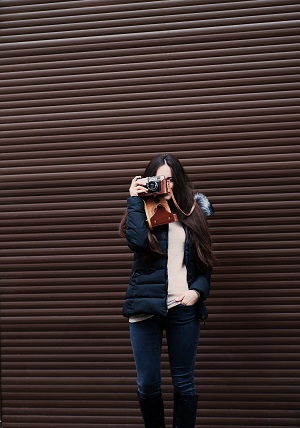The humble camera strap, once a utilitarian accessory, has undergone a remarkable evolution over the years, transforming from a simple means of carrying a camera to a sophisticated tool that blends functionality, comfort, and style.

Aspects
The journey of camera straps from classic designs to modern innovations is a fascinating reflection of the changing landscape of photography and technology. In this part, we will talk about camera strap history from 9 aspects.
Classic Designs
In the early days of photography, camera straps were rudimentary and primarily served the purpose of preventing the camera from falling. Classic designs featured basic leather or cloth straps that photographers slung over their shoulders or wore around their necks.
These straps, while functional, often lacked padding or specialized features, and comfort was often sacrificed in favor of utility.
Leather Elegance
As photography advanced and cameras became more accessible, leather camera straps emerged as a symbol of sophistication and status. Leather, with its timeless appeal, added an air of elegance to the photographer’s attire. These straps were often finely crafted, featuring embossed logos or intricate patterns.
However, the emphasis on aesthetics sometimes overshadowed comfort, leading to straps that were visually pleasing but not necessarily ergonomic.
Introduction of Adjustability
With the progression of technology and the advent of more versatile cameras, camera straps started incorporating adjustable features. Photographers could now customize the length of the strap to suit their preferences, enabling them to wear the camera at different angles and heights.
This marked a pivotal shift towards user-centric design that acknowledged the importance of comfort during extended shooting sessions.
Nylon and Utility
The mid-20th century witnessed the rise of nylon camera straps, introducing a new era of lightweight and durable options. Nylon offered a balance between strength and flexibility, making it a practical choice for photographers on the move.
This era also saw the introduction of camera strap connectors that provided quicker and more secure attachment to the camera.
Modern Innovations
As cameras evolved to become more compact, versatile, and technology-driven, camera straps followed suit with innovative designs tailored to meet the demands of modern photographers.
Ergonomics and Comfort
Modern camera straps prioritize comfort through ergonomic design and innovative materials. Padded shoulder straps with memory foam or gel inserts reduce strain during prolonged use.
Distributing the weight of the camera evenly across the body has become a central concern, leading to the adoption of sling-style straps that contour to the photographer’s movements.
Versatility and Quick Release
In response to the diverse needs of photographers, quick-release mechanisms have become standard features. These mechanisms allow for swift transitions between handheld shooting and tripod use.
Additionally, convertible straps that adapt to different carrying styles (neck, shoulder, cross-body) have gained popularity, giving photographers flexibility in the field.
Integration of Technology
The integration of technology is a hallmark of modern camera strap design. Straps now accommodate accessories such as smartphone holders, memory card slots, and even wireless remote holders.
These features reflect the interconnected nature of modern photography equipment and enhance the photographer’s efficiency.
Expressive Design
Contemporary camera straps also offer a platform for personal expression. A wide array of designs, patterns, colors, and even customizable options allow photographers to choose a strap that resonates with their style and identity.

Conclusion
The journey from classic camera strap designs to modern innovations is a testament to the evolving needs of photographers and the dynamic nature of the photography industry. From simple functional tools to sophisticated companions that blend comfort, functionality, and aesthetics, camera straps have transformed into an integral part of the photographer’s kit.
As technology continues to advance, it’s intriguing to contemplate the possibilities that lie ahead in the realm of camera strap design.
 Belinda
Belinda